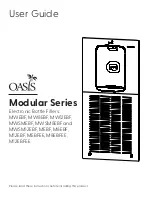
MERLIN LEGEND Communications System Release 5.0
Feature Reference
555-650-110
Issue 1
June 1997
Features
Page 449
Primary Rate Interface (PRI) and T1
PRI service offers the following benefits:
■
Network Subscriber Service Options. Release 4.2 and later systems
support network services from AT&T, MCI, and the DMS-100 5ESS
network of local exchange carriers (LECs). These services are described in
‘‘Type of Service’’ on page 452
. (Prior releases support AT&T subscriber
5ESS LEC subscriber services only.)
■
Speed. Data calls to outside destinations can be established on the same
B-channels used for voice calls if the service allows. Dedicated,
conditioned lines/trunks are not needed. By supporting high-speed digital
data transmission, PRI provides the capability for videoconferencing and
Group IV (G4) fax.
■
Dynamic B-Channel Assignment. An individual B-channel can be
removed from service without blocking ISDN calls to or from any extension.
■
Improved Toll Restriction. The ways that toll restriction can be bypassed
are limited on PRI lines/trunks. Specifically, three types of toll abuse are
eliminated with PRI service:
— Because dialing is in the form of out-of-band messages that must be
generated by the system, a user cannot use a touch-tone generating
device, such as a pocket dialer, to send dialed digits directly through the
system to the line/trunk.
— Without PRI service, toll restriction can be deceived by dialing digits on a
loop-start line before the far-end switch applies dial tone. These initial
digits may indicate a local call to the system’s toll-restriction checking
while the subsequent digits, those actually recognized by the far-end
switch, may produce a toll call. This is not possible with PRI service
because every digit screened and passed on by the system’s toll
restriction is guaranteed to be received by the far-end switch.
— A PRI line’s far-end disconnect signal provides a reliable indication
when a call ends, and a new call cannot be initiated until the line has
been released from the prior call on both ends. This prevents a user on
a loop-start line, waiting off hook for the restoration of dial tone after a
previous call, from placing a second call before toll restriction is
reapplied.
■
Reliable Indication of Far-End Disconnect. This prevents an incoming
call from being blocked because a line is not released when a call is ended.
The system’s implementation of PRI provides the following features:
■
Support for Caller Identification. The system supports AT&T’s INFO2
Station Identification/Automatic Number Identification (SID-ANI) Service
and, in Release 4.2 and later systems, similar services from MCI and local
exchange carriers. Customers who subscribe to one of these services can
identify the incoming caller on a PRI line/trunk by either telephone number
or billing number. The Calling Party Number (CPN) in Release 1.0 is
















































